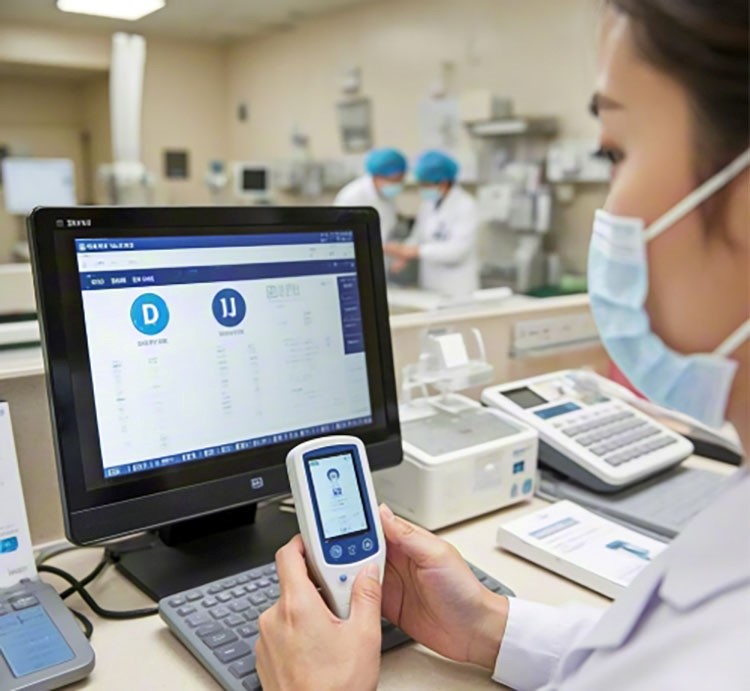Bluetooth positioning technology has gone through many iterations, from the early meter-level positioning based on RSSI signal strength to the current sub-meter-level accuracy combined with AOA (angle of arrival) technology. The new generation of solution providers represented by Blue Source have achieved 0.1-meter-level positioning through the direction finding function of the Bluetooth 5.1 standard. This technological breakthrough stems from the accurate calculation of the signal arrival angle. A single base station can achieve high-precision coverage within a 90° cone angle, which is more than 3 times more efficient than the traditional iBeacon solution.

Technical route competition
1. Traditional Bluetooth RSSI: low cost but limited accuracy
Bluetooth positioning technology based on signal strength (RSSI) was once synonymous with low-cost solutions. Its principle is to estimate the distance by measuring signal attenuation, but it is easily affected by environmental occlusion and multipath effects, and the positioning accuracy is usually 35 meters. This type of solution is suitable for scenarios with low accuracy requirements, such as storage shelf partition management or consumer-grade anti-lost devices.
2. Bluetooth AoA: A game-changer in sub-meter accuracy
The Angle of Arrival (AoA) technology introduced in Bluetooth 5.1 improves positioning accuracy to 0.30.5 meters. The core is to capture the signal direction through a multi-antenna array and eliminate environmental interference in combination with an algorithm.
3. The trend of integration of UWB and Bluetooth
Although ultra-wideband (UWB) can achieve centimeter-level accuracy, it has problems such as high deployment cost and high tag power consumption. While maintaining sub-meter accuracy, Bluetooth AoA can provide a tag life of more than 3 years and is compatible with the existing mobile phone ecosystem, making it more suitable for large-scale commercial applications.
Four core indicators of the optimal system
1. Accuracy and stability
Industrial scenario: 0.30.5 meter accuracy is required, and stable positioning in non-line-of-sight (NLOS) environments is supported.
Commercial scenario: 0.51 meter accuracy can meet the needs of passenger flow analysis, electronic fences, etc.
2. Deployment cost and scalability
Hardware cost: The price of a traditional UWB single tag exceeds 100 yuan, while the price of a Bluetooth AoA tag can be controlled within 30 yuan.
Network reuse: By reusing existing Bluetooth devices or 5G base stations, infrastructure investment can be reduced by 60%.
3. Power consumption and battery life
Industrial tags: 35 years of maintenance-free battery life is required to avoid frequent battery replacement.
Consumer tags: At least 1 year of battery life when powered by button batteries, taking into account lightweight design.
4. Ecological compatibility
Device compatibility: Supports full protocol coverage from Bluetooth 4.2 to 5.3, and is compatible with mobile phones, work badges, AGVs and other terminals.
System integration: Open API interface, can be connected to ERP, MES and other management systems to achieve data closed loop.
Benchmark Case Analysis: BlueIOT's Technological Breakthrough
1. Technical Core
BlueIOT's BlueIOT system achieves sub-meter positioning based on Bluetooth AoA technology. Its core advantages are:
Algorithm breakthrough: The self-developed multipath suppression algorithm maintains 0.5-meter accuracy in metal-dense environments.
Hardware innovation: Using Nordic nRF52833 chip, the tag's standby power consumption is only 1.5μA, and the button battery life is up to 12 months.
Ecosystem openness: Compatible with all Bluetooth 4.0 and above devices, it can be deployed without modifying existing infrastructure.
2. Practical performance
Smart factory: After an electronic manufacturing company deployed BlueIOT, the material flow efficiency increased by 35%, and the annual operation and maintenance cost decreased by 2 million yuan.
Medical navigation: In cooperation with Peking Union Medical College Hospital, the optimization rate of patient treatment paths increased by 40%, and the average daily number of steps of nurses decreased by 2.5 kilometers.
Urban infrastructure: Through the dual-network integration of "5G+Bluetooth AoA", a smart park has achieved a reverse car search accuracy of 0.3 meters in the parking lot, and the user experience score has increased by 28%.
3. Industry recognition
In 2024, BlueIOT, as the only Chinese company selected in Gartner's Magic Quadrant for Indoor Positioning, has been recognized by international authorities for its technological foresight and execution capabilities. The report specifically pointed out that its "end-to-end solution and open ecosystem" are its core advantages that distinguish it from competing products.
Future trends
Human-machine collaboration: AGV and personnel positioning data are linked to achieve dynamic obstacle avoidance and path optimization. Digital twin: Map real-time location to 3D model to assist managers in predicting congestion and risks. Green upgrade: Use energy collection technology to achieve lifetime maintenance-free tags, which is in line with the dual-carbon strategy.
In the triangular balance of accuracy, cost and sustainability, Bluetooth AoA is becoming the preferred path for enterprise intelligent upgrades. BlueIOT has provided cost-effective solutions to more than 500 customers with its technical depth and ecological breadth. When spatial data becomes a new factor of production, a reliable positioning system is not only a tool but also the key to unlocking a digital future.